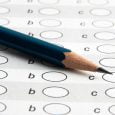Instructor-made practice exams are valuable tools in helping students learn. They help students develop metacognitive monitoring skills and help them identify specific gaps in their knowledge. Additionally, they provide students with feedback that helps them understand what they did wrong. This allows students to improve their performance on actual tests. However, these practice tests should not be a substitute for high-stakes exams.
Regardless of their quality, practice exams are a powerful review option for students. Ideally, practice exams are given in the same way as the final exam. Therefore, students should study for them before sitting down to take the last. Those who participate in practice exams can better predict their performance on an actual exam and focus their studying accordingly. Instructor-made practice exams can also encourage metacognition and self-assessment, two essential skills for learning. In addition, practice exams can help students understand how to approach different questions and learn time management. They are also helpful for students who need clarification on the format of an exam.
Methods of creating them
Whether you use online assessments or traditional tests, creating a practice exam is a great way to prepare your students for the real thing. In addition to being an excellent way to test students’ learning, practice exams also effectively implement spaced retrieval practice, which involves systematically pulling information from memory and hardening it. Creating a practice exam also helps students see where they have weak points and what they need to improve on.
A practice exam allows students to assess their knowledge and confidence in the material. Ideally, the practice exam will be conducted the same way as the final exam. Therefore, students who click here to participate in the practice exam are more likely to have a better idea of how they will perform on the exam, which can help them focus on studying.
Techniques for improving them
Instructors can improve the quality of practice exams by following a few techniques. First, they should make sure the exams are free from bias. This is important because students differ significantly in their backgrounds and learning styles. For example, a student in the United States may need help understanding a specific standard for a European student. The exam should also be rigorous enough to measure the student’s knowledge and understanding of the material.
Another technique for improving practice exams is encouraging students to complete them independently. Practicing before an exam can make the students more confident and help them prepare better for the exam. Even if this results in something other than perfection, it will build their confidence and understanding of the material. The following technique is to have students review the notes and outlines associated with each exam question. Pay special attention to items that the instructor stressed in class. It can also help to make flashcards out of essential points in the notes.
Ways to make them transparent to non-experts
One of the best ways to ensure that a practice exam is transparent is to make the marking scheme available to non-experts. For example, you can use a model answer or an external examiner’s marking scheme. Another method is to use a rubric. These can be great tools to assess student work and be shared with students to help them prepare for the exam.
An essential characteristic of good practice exams is that they give students an equal opportunity to demonstrate their knowledge. It is important to remember that two students may know the same material but perform better under pressure. For this reason, exams should be difficult enough to test student learning. Moreover, students should have the option to bring memory aids to help them answer questions on the exam.




